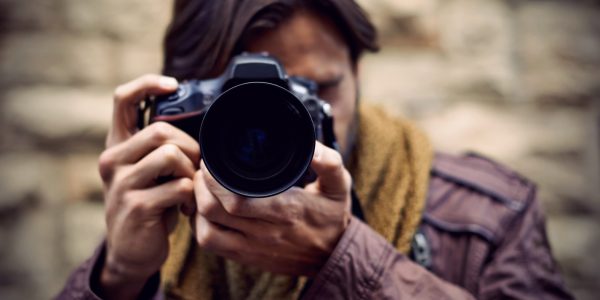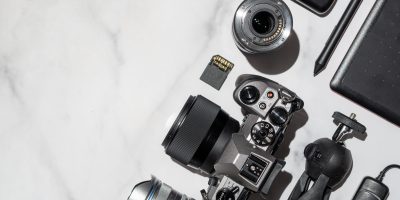A Beginner’s Guide: How to Get Into Photography and Sports Photography

A man captures a stunning moment with a camera while exploring the world of photography and sports photography.
A man captures a breathtaking moment with a camera while exploring the world of photography and sports photography.
Photography is a language unto itself, requiring no words to convey a story, communicate emotion, or capture a moment of magnificent beauty. As more people use cameras to express themselves and document their environment, photography develops as an important method of communication that is both generally understood and deeply personal. For anybody wishing to enter the huge and engrossing world of photography, the journey begins with mastery of the fundamentals, an awareness of the many themes and styles, and possibly the particular challenge of sports photography, which elevates the mundane to the exhilarating.Sports photography, in particular, provides an exciting introduction to this visual art form, requiring not just a keen eye and technical aptitude, but also an adrenaline-fueled enthusiasm that thrives in the middle of action. Both paths—general photography and its more specialized sports counterpart—provide numerous options for professional development, community involvement, and artistic fulfillment.
Getting Started with Photography

Before capturing high-octane moments, every photographer grapples with the stillness that teaches them the very essence of this art form. Understanding the basics is more than just handling the equipment; it is about learning to see.
Understanding Camera Basics
At the core of photography lies the camera. Understanding its features and settings is fundamental. A solid grasp of technical components like as aperture, shutter speed, ISO, and focal length will allow you to fully utilize your camera’s capabilities. For novices, practicing may be as basic as learning the art of focussing on a single subject or adjusting the exposure triangle to generate different effects.
Exploring Different Types of Photography
The beauty of photography is in its infinite variety. Boudoir photography, which focuses on the human form, emotions, and expressions; landscape photography, which conveys the grandeur of nature’s greatness; and macro photography, which allows for the careful examination of minute elements, each tell a distinct story. Aspiring photographers should try with each to figure out their likes and capabilities.
Learning Composition Techniques and Lighting
Great photography is more than just catching the subject; it’s about expressing a story with the image. Composition principles such as the rule of thirds, leading lines, and framing give a framework for making visually pleasing images, yet knowing lighting details may radically alter the atmosphere and focus of a subject.
Mastering these fundamental components of photography is vital preparation for anybody who wishes to flourish in this art form. It changes your perception of the world and prepares you to go on, ready to hone your skills.
Transitioning to Sports Photography

Sports photography is the thrilling sensation of capturing life at its most active, whether it’s a winning goal, a finish line sprint, or a heart-stopping surge in a horse race. This occupation necessitates the use of specialized equipment, competence, and a desire for adventure.
Equipment Needed for Sports Photography
In the world of sports photography, the appropriate equipment might mean the difference. A camera with a quick burst rate, sturdy build, and high ISO capability is essential for shooting in a variety of settings, while a telephoto lens gets you closer to the action. Other necessary items are a strong tripod, a camera case with easy access, and extra batteries and memory cards.
Tips for Capturing Action Shots
The ability to freeze and describe motion is what distinguishes sports photography. Understanding the sports you’re photographing is critical; anticipate the action, track the ball or athlete, and be ready to push the shutter at the right moment. Begin by practicing with simpler motions, then progress to more difficult themes.
Understanding Sports Photography Settings and Techniques
Shutter priority mode may be your best friend in sports photography, since it allows you to select the essential shutter speed while the camera automatically adjusts the aperture for optimal exposure. Panning or pre-focusing on the expected point of action can also provide dynamic outcomes that convey a sense of speed and agility.
Looking for a photographer? Call Today!
Building Skills and Portfolio
The journey from novice to master in photography is paved with daily experience, learning from both achievements and disappointments, and always challenging oneself.
Practicing Regularly and Experimenting with Different Subjects
Dedicate time to practice regularly, experimenting with various subjects and shooting conditions. Use every shoot as a learning opportunity and review your photos thoroughly, looking for ways to improve. Start with local events or nature scenes and gradually push your boundaries.
Participating in Photography Workshops and Online Courses
Workshops and courses, whether in person or online, offer structured learning experiences and the opportunity to seek assistance from professional photographers. They may also teach you to new techniques and styles, encouraging you to try out new ways of expressing yourself.
Creating a Portfolio to Showcase Your Work
A portfolio is more than simply a collection of your greatest work; it also reflects your development throughout time. Choose your most captivating photographs that embody your style and convey a story. A well-curated portfolio may be quite useful when seeking comments, applying for photography employment, or even selling your prints.
Engaging with the Photography Community

The photographic community provides friendship, inspiration, and, on occasion, the gentle push you need to take your craft to the next level.
Joining Photography Clubs or Online Forums
Interacting with other photographers may be really beneficial.Join local photography organizations for face-to-face interactions, or immerse yourself in online forums where you can share your work, ask questions, and communicate with a diverse range of photographers.
Collaborating with Other Photographers
Collaborations can offer fresh perspectives and ideas, especially when you pair up with photographers who have different specialties. Working with others can also lead to new opportunities and the chance to build a more robust body of work.
Seeking Feedback and Mentorship
Constructive feedback is essential for progress in any creative area. Find a mentor who can provide you customized advice on your photography, encouraging you to think differently and enhance your abilities.Remember that even the most successful photographers continue to learn and grow.
How to Get Into Photography: Tips and Tricks
In this section, you would label the different tips and techniques beginner photographers need to know. Learn how to steady your camera without a tripod, including breathing techniques and the use of props like beanbags.
Exploring the World of Sports Photography: A Beginner’s Guide
Go into further detail about the technicalities of sports photography. Freezing the Action: Choosing the Ideal Shutter Speed for Sports Photography. Discover how to capture athletes in motion with precision, exploring different shutter speeds based on specific sports like basketball, soccer, or track and field. Remember, the ideal speed depends on the action you want to freeze and the lighting conditions.
Next Chapter Media: Our Photography Specialization
Next Chapter Media is your guide through the thrilling process of mastering photography. From providing in-depth tutorials and one-on-one coaching to curating photography retreats and client workshops, we specialize in unlocking your creative potential. Whether you’re aiming to photograph the stillness or the surge of movement, we’re here to help your vision come alive.

